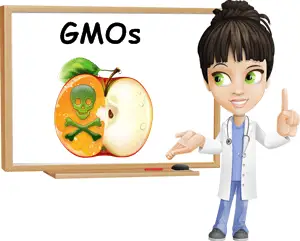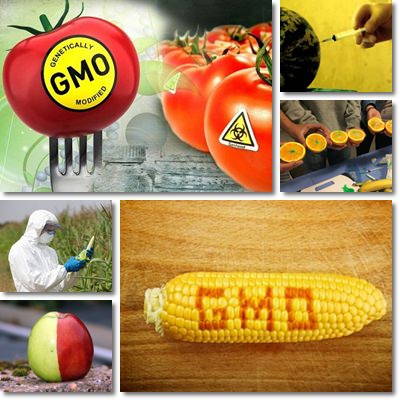GMO stands for genetically modified organism and refers to any living organism whose DNA has been altered in an unnatural way, in view of displaying traits that would not have otherwise developed as a result of a normal evolutionary process. GMOs are matter of great concern nowadays as ornamental plants, food crops, fish and a growing number of animals are having their DNA altered for mostly commercial purposes. Genetic mutations are obtained through genetic engineering techniques such as gene mutation, gene insertion or gene deletion. Unlike selective breeding, this is a unnatural process because the transfer of genes occurs between completely unrelated species and outcomes cannot be fully predicted even by those carrying out the process.
While creating medicines might not be such a bad use of GMO science, altering living beings in the laboratory in order to maximize agriculture profits, without sound, long-term environmental studies performed prior to the mass implementation of such techniques, puts both human and ecosystem health at great risk. At great risk for what you might ask? For disrupting fragile balances upon which our health depends. That’s what engineering GMOs does.

What are and how are GMOs made?
GMOs are living organisms put under the microscope to have their DNA altered. Bacteria, plants, animals, every living thing can be the subject of genetical engineering experiments and become a genetically modified organism. GM foods are food crops subjected to genetical engineering. Genetical engineering techniques include either transferring a gene from a species to another, erasing a gene from the DNA of a certain species or making a gene in the DNA of a species mutate by various procedures. While this may sound harmless, bacteria genes can be attached to food crop species, virus can be altered to become more or less aggressive, and genes can be deleted to take out a certain trait in an animal or plant.
Altering DNA is like taking a card from a card house: in the end, it either stands tall, or crumbles to the ground. This is the danger of GMOs that every GMO supporter refuses to acknowledge: genetically modified foods can have an unpredictable effect on human and ecosystem health. It’s like when a kid adds a bit of blue to his or her yellow modelling clay: it will never be the same color again.
The truth is, the genetic engineering of food crops is not, as its advocates campaign, a mere extension of the cultivation of natural plants. Genetic engineering modifies existing plants so they become different from the original.
When you transfer a virus gene into the (let’s say) corn DNA to make it resistant to a certain herbicides or expose seeds to radiation to see how good things can get or use chemical mutagens such as Ethyl methanesulfonate (EMS) to induce mutations in food crops, then you are releasing food crops that may alter human DNA over time and possibly generate unthinkable mutation processes that may endanger human and ecosystem health in the long run. Because that is exactly the problem with GMO foods: we have no idea how they will affect us in the long run. Despite reassurances from the part of producers that we can eat GMO foods safely, not even they know how these foods will leave their mark on us 10 years from now.

Why are GMOs bad for you?
Find out below what science has to say about the dangers of GMOs.
Altered nutritional profile (sometimes for the better)
GMO foods don’t have the same nutritional content as conventional food crops. By altering the DNA of a tomato, let’s say, and making it yellow instead of red, we might get a tomato with a good vitamin A and carotenoid content, but containing less or very little of the antioxidants lycopene or lutein. If we are not aware of nutritional variations in genetically engineered foods, then we will most likely fail to nourish ourselves properly. At the same time, some good can be done too: readily available foods such as rice can be enhanced to provide better nutrition at a larger scale (example: genetically engineered ‘golden rice’ that helps correct vitamin A deficiency).
Potential for unknown health effects long-term
There is no way of knowing how a genetically modified food can affect us or the environment long-term. Big changes in the nutritional value of foods brought on by the use of intensive agricultural practices that cause soil depletion require us to reconsider our diets in order to prevent severe nutritional deficiencies and associated health issues. At the same time, new crops, albeit designed to provide improved nutrition, are also designed to survive the use of massive amounts of chemicals, pesticides, even radiation and this is bound to produce serious side effects over time for us and the environment.
GMOs can be toxic
More often than not, genetically engineered seeds are made to resist the massive use of herbicides and even produce some sort of natural insecticides themselves. So we might end up eating a plant which is made to be resistant to the herbicide glyphosate, which has been sprayed with so much of this herbicide that it becomes unsafe for consumption. Thin about why those responsible for treating food crops with herbicides or pesticides often have to wear protective gear from head to toe to avoid inhaling the toxin.
GMOs can change us
Of the little research conducted up to this point, it has been revealed that the modified genes from GMO food crops are not destroyed during digestion, but remain in the brain of newborn mice. Recent research also shows that toxins from GM foods migrate into the fetal blood, putting even future generations at risk for potential health problems.
The seeds are owned by big corporations
Monsanto, the world leader in genetically modified seeds, is out for profit. It forces farmers into debt by selling them plants with sterile seeds, creates and distributes herbicides and pesticides known to pollute the environment and cause cancer in animals and humans. Moreover, Monsanto was the one to devise the recombinant bovine growth hormone (rBGH) used for increasing milk production in cows, but which increases the incidence of health problems in dairy cattle. When billions of dollars of profit rely on biotechnology and the genetic engineering of seeds, are ethics and health even taken into account?
There are side effects for wildlife and damage to the ecosystem
Since Monsanto began its dominion, billions of bees have died. So have billions of ladybirds. And fireflies are almost extinct. We depend on insects such as bees for pollination so what will we eat if they all die? And what does it mean when ladybugs refuse to come near your two apple trees? Won’t this make you think twice about what you are actually eating?
Conclusion
We now live in a world where staple crops such as corn, soy, cotton, canola and sugar beet are about 94% genetically modified. And we can’t know for sure whether or not they are labelled properly, if they are at all. Even worse, we won’t ever know how exactly the genetically modified tomatoes, papaya, rapeseed, rice, squash or any other food we eat have been modified and what the health impact will be in the long run.
GMOs are a just a fancy name for crops that have undergone special procedures such as gene transfer or radiation therapy, with the aim of providing good annual yields and greater profits. The food industry relies heavily on them to cut back on production costs and time, but is simultaneously risking our health by altering plant DNA for the purpose of generating prompt mutations to the companies’ financial benefit. These are terribly worrisome and disturbing facts with serious implications as far as ethics and human and ecosystem health are concerned.
But because GMOs are a major cost-reducer for the food industry overall, they are hurried to the market without studying their health impact. They are also bigger, better-looking and don’t spoil for longer, traits which appeal greatly to an untrained eye, thus contributing to the mass deception that is GM food.
If you want to lead a healthy, disease-free life, help your local farmers make a living by buying locally and only eat what is in season. Even more, have a go at your own vegetable garden to ensure you only get the best of the best. Sophisticated technologies such as genetic engineering mostly serve others’ interests, but we too can look out for ourselves and our environment by refusing to give up eating healthy and natural.
